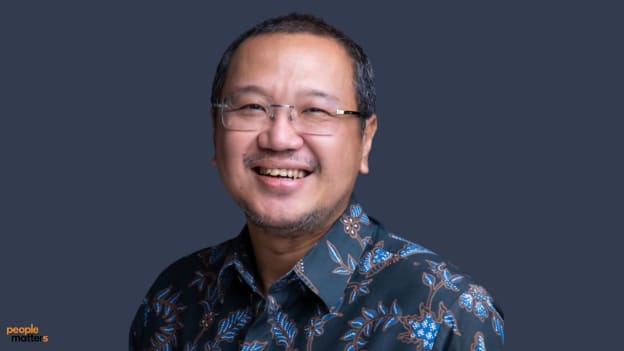How to grow leaders, not followers: Steven Yudiyantho

With a steadily growing regional GDP and a rising tech-savvy talent pool, Southeast Asia is on the frontlines of this decade’s AI revolution. Despite the slowdown in the global tech industry in the past 12 months, countries like Indonesia, Singapore and Malaysia are upskilling their talent to ride on the crest of the AI wave.
Parallel to this effort of upskilling people is also the hunger for high-calibre talent evident in the burgeoning startup sector. But how exactly is talent development in the region keeping pace with the changing demands of tech companies?
Indonesia HR leader Steven Yudiyantho spoke to People Matters on how he encourages line managers to identify the right skills and potential and develop the next generation of leaders who can tackle problems and grow into their roles.
Good leaders are a good benchmark
“First, look for somebody with entrepreneurial skills,” Steven said. “Second, you’ll need somebody who can collaborate. Somebody who will make customers their obsession. And last but not the least, somebody who is really good with data.”
Steven recommends leaders attract, recruit, select and develop talent based on this criteria. This specific mix of characteristics has served traditionally non-technical industries, such as finance, in their own digital transformation journeys.
“The market environment is changing,” Steven said. “Even among banks, your competitor is now no longer a bank or other financial services firm. You now have to compete with technology companies.”
And that includes competing for the same digitally savvy talent as other tech firms. “You need to build up your technology capability as if you’re a tech company,” he said.
How to see beyond the present and identify talent potential
“We need a leader who has ‘ambidex’ capabilities,” Steven said. “A leader who can optimise the core business and has the capability to explore future potential.”
In Steven’s work of building up talent, the challenge of identifying growth potential beyond what is immediately evident is among the toughest.
“First, talent management is considered simply as a human capital initiative. Based on my experience, we need to see talent management as a corporate initiative, not only an HR initiative,” he said.
“The second one is, in terms of talent development, people think that one training fits all needs of talents. My observation is, if you consider talent as having a high potential, make a special training programme for them.
“The third challenge is the capability of line managers to become talent managers. What does it take to become a good talent manager? They have the ability to identify potential. And this is not really easy.”
High performance and high potential are not the same
A common misconception among managers is to assume that a high-performing team member will automatically have high potential as well, Steven pointed out.
“Not every good performance equals good potential. Because as you climb the ladder of organisations, the competencies [required of you] will be different,” he said, drawing on the analogy of celebrity talent scout Simon Cowell.
“He can identify a ‘nobody’ and shape them into a superstar,” Steven said. “They need to have an appetite for talent.”
“From my perspective, there are a lot of cases in which line managers want candidates to be 100% ready to be promoted. But that is not really the case for promotions,” he said.
“People might have only 60% of readiness, but they need to be promoted. That’s the accountability of line managers to onboard and coach this talent. So, later on, they will be ready.
“Last but not the least, we need to be more proactive versus reactive when approaching talent management. Meaning, if in the next month, we need to fill positions, then we just start hunting for talent right now. We never plan three years from now. We are so reactive,” he said.
How leaders develop other leaders
Successful leadership development starts with the right mindset, Steven explained.
“If you have a team member approaching you over a problem, you as a manager might be really tempted to give them a solution rather than discussing the potential solution with them, especially when the problem is really significant. You just want to do some shortcut to save time. Rather than discussing [the problem], you just tell them, this is the solution. I think it’s common. Line managers give solutions to their team members.
“However, if your team member comes to you again, you’ll just give them another solution. What would be the impact?
“You are becoming a problem solver for them,” Steven said. “But remember, your team member is not growing as a leader because they are not being trained to solve the problem independently. In his or her mindset, if they have a problem, then they would just go directly to their line managers.
“After several years, you would be complaining over why [they] cannot take initiative or solve problems independently,” he said.
“The intent is good. You want to solve the problem. But the impact in the long run is that you’re diminishing your team member’s potential.”















